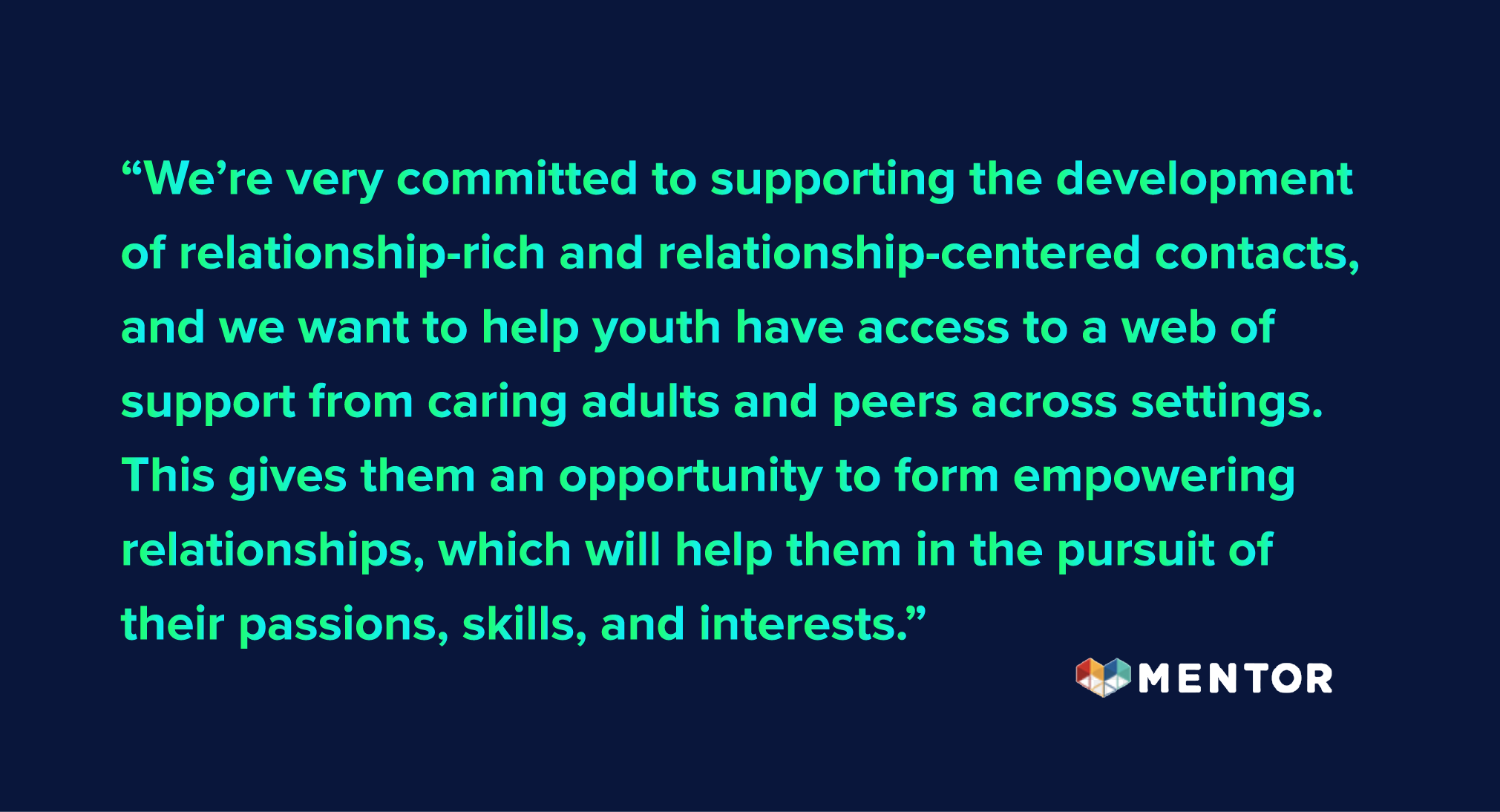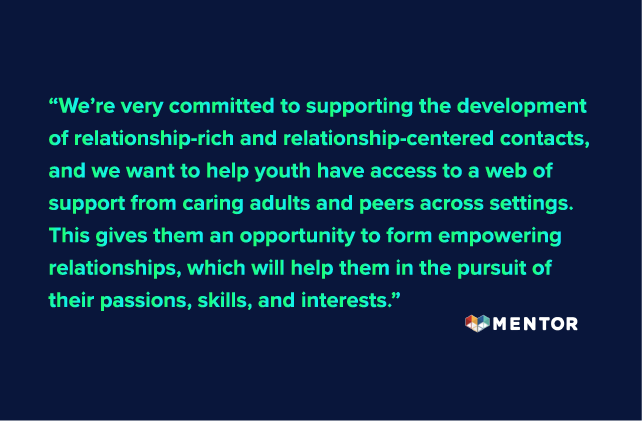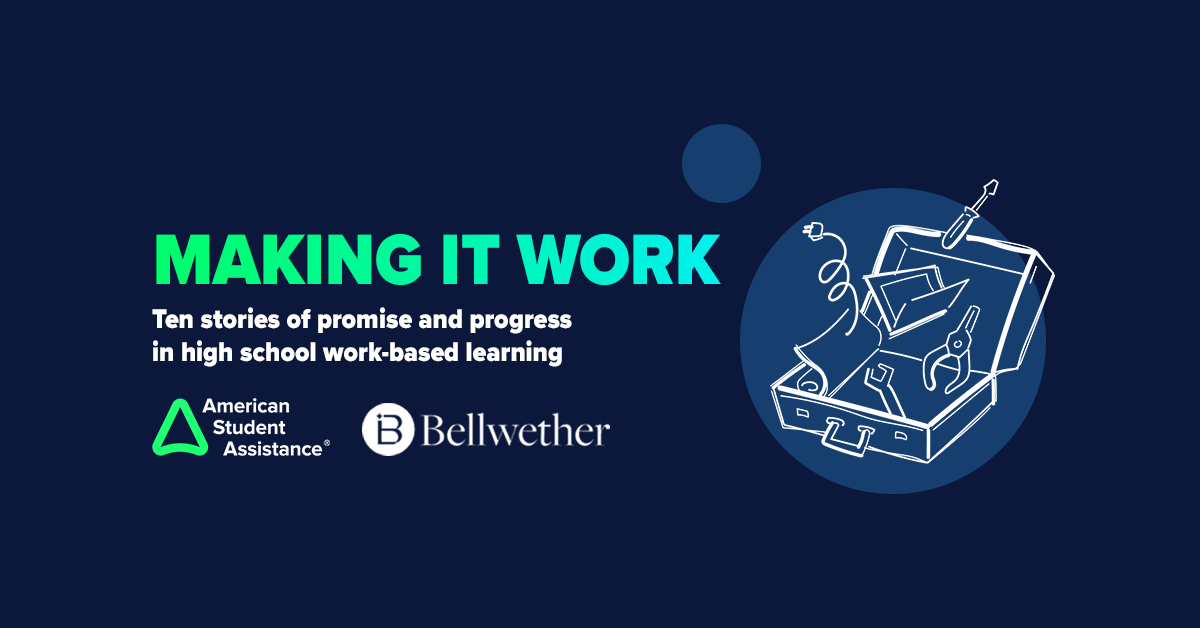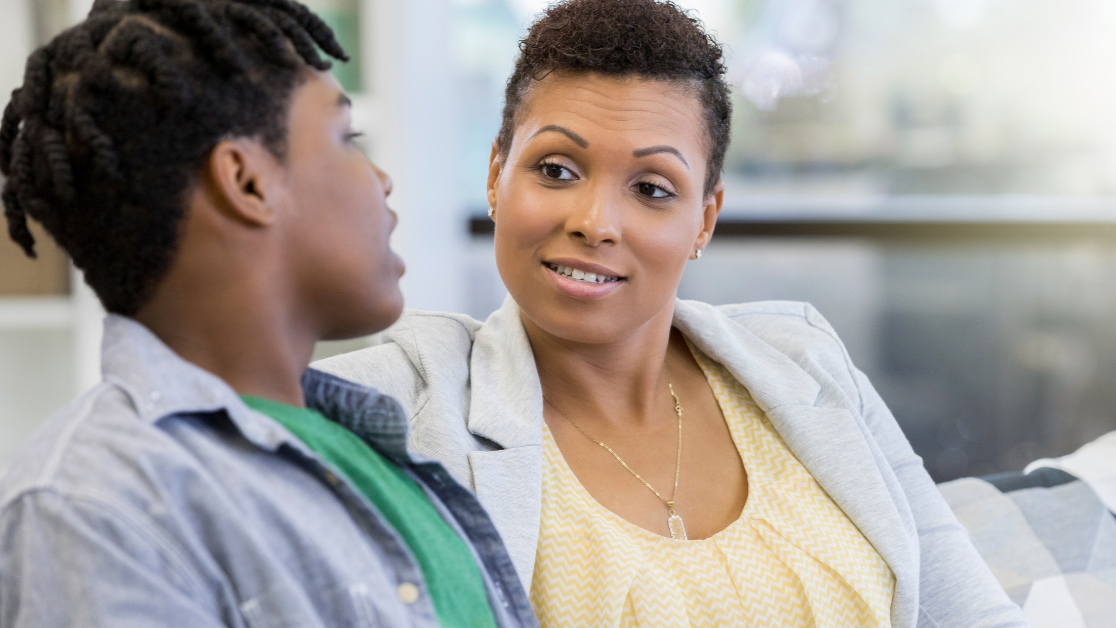As research has shown, ensuring that students can carve out a path to postsecondary success requires some shifts in the way we view and approach the education environment beginning in middle school. One such shift centers on students’ relationships — that is, who is available to guide them and help them hone their skills and interests in a constructive way?
I recently moderated a panel session at AMLE ‘21 focused on the idea of “relationship-centered schools,” an emerging model that aims to provide influencers in students’ lives that can foster positive development, with the goal of helping them to better know themselves as they consider postsecondary education and career options. The panel featured insights from Pamela Civins, Senior Consultant at MENTOR National and Danny Heller, Manager of College & Career Readiness at Baltimore City Public Schools.
Here are the key takeaways:
What exactly is a relationship-centered approach for schools?
According to Pamela Civins of MENTOR National, it’s about fostering a culture of engagement and encouragement in schools: “We’re very committed to supporting the development of relationship-rich and relationship-centered contacts, and we want to help youth have access to a web of support from caring adults and peers across settings. This gives them an opportunity to form empowering relationships, which will help them in the pursuit of their passions, skills, and interests.”
Because schools are where youth come every single day, they are essential hubs of the relationship-building process that should work side-by-side with their traditional education. This, says Civins, is the crux of the relationship-centered pilot program that MENTOR National is initiating.
“These supportive relationships can be built during school time and during after-school time, so we created a data-driven framework for schools and school districts to use,” she explains. Ultimately, creating these relationships can help students grow their social capital and be better prepared for the post-high school world.
Once these relationships are established, students engage in experiential, project-based learning with problem-solving activities based on real-life situations. This helps to activate students’ minds and contextualize what they’re learning in a tangible setting.
How does a relationship-centered model get implemented in schools?
According to Civins, it starts with a “mentoring mindset” in both the adults and students: “The more people in a child’s life that use a mentoring mindset to support them, the more chances and opportunities they have to build that network and their social capital throughout their K-12 journey.”
The “mentoring mindset” is a way of thinking and interacting that places young people at the center, and allows mentors or other caring adults to be true partners on a young person’s path. This starts with these adult influencers being intentional with every interaction they have with the students in their lives, and thinking about how they can help propel them forward.
Danny Heller explains that Baltimore City Public Schools are in the pilot phase of implementing the relationship-centered model, called “Future Ready.” These programs begin in middle school, but they have a particularly large program for ninth graders: “There’s research that shows that attendance, behavior and grades in the ninth grade are essentially predictive of graduation and where students end up in their postsecondary [lives],” he explains.
One of the primary goals, Heller says, is an increase in engagement. Students with 40-80% attendance rates are particularly targeted, in an effort to provide them with programming that helps them feel more in-touch with their education — which has been a particularly difficult challenge over the course of the pandemic. While there isn’t enough data just yet to definitively demonstrate outcomes, initial surveys of the program of mentors and mentees showed overwhelmingly positive responses. This signals that the initiative is well-received and instills hope that overall engagement will increase as a result.
What are some considerations or challenges to implementing a relationship-centered model in a school?
In order to implement a relationship-centered approach, you have to start with recruiting mentors and figuring out who your partners will be — and getting them set up. This requires “getting them through fingerprinting processes, vetting curriculum and partnerships, and procurement. There’s a whole lot of really difficult things that you have to do in the district, aligning it to our multi-tiered systems of support framework,” according to Heller. Navigating the bureaucracy of school systems is no easy task, but Heller and his team observed successful examples from places like Kansas City and Fresno for inspiration.
Consulting with knowledgeable players in the space is key, including experts on equity and bias, in order to ensure that the programs are reaching the students they need to reach the most. There’s also the factor of educating students and parents on what these programs are and how they function.
Another key factor is having a team that is dedicated to ensuring that these programs work for all students. To do this, Baltimore City Public Schools are in the process of bringing on a Mentoring and Adult Relationships Team who will continue to grow these initiatives and see them through.
How can schools get started? What’s the first step?
According to Heller, educators and administrators should ask themselves these questions when considering a relationship-centered approach:
- What piece of this fits in with my philosophy?
- Where are my gaps, and who are the people that I can bring together to make this work?
- Do I have the capacity to manage it?
Civins agreed, adding that it also comes down to strategically engaging students, creating a clear communication strategy for families and parents to understand these programs, and having the personnel to see them through to the end.
“The goal here is how do you become more relationship-rich within a school? How do you build that culture, that community where everybody wants to be there and they feel like they belong?” That, Civins says, is the question that every school should ask when considering this approach.
We hope you found our recap helpful, and we’d love for you to share your thoughts with us.





